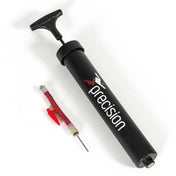What To Do If One Of Your Players Has Concussion?

Shopify API |
Last night we saw Joe Allen suffer a severe blow to the head, playing for Wales against Republic of Ireland, in their vital World Cup qualifier. At 1st it was thought by the commentator that he would be able to continue however, the Welsh physio decided he could not and was swiftly taken off the field of play. If that happened to one of your players would you make the same call?
It got us asking what was the process to decide he was not fit to play and who would make that decision. Clearly in professional sport, they have doctors and physio's that are trained each year on all aspects of health and fitness and concussion would be covered at length. At grassroots level most clubs would have 1st aid trained person in attendance but how many courses actually cover these issues in enough detail before handing out the ATTENDED certificate?
Jason Cardy of Cardy Sports Clinic in Abingdon takes us through the process:
The physio would first see the initial impact and that the player has banged their head and is on the floor. As the first aider you run over to try to ascertain the extent of their injury. You would then use a Scat-3 test to determine whether they are ok to continue or should be pulled from the game.
When you are on the pitch you may decide to ask them the Maddock's questions; what score is it? Who did you play last week? and who scored the last try or goal? Prior to this you would look to score them out of 15 on the Glasgow Coma Scale. This will measure their eye response, verbal response and motor response - any score below 15 and you are obliged to remove them from the game and ensure they are monitored until they see a doctor or attend the hospital. The Glasgow Coma Scale is worked out as follows



